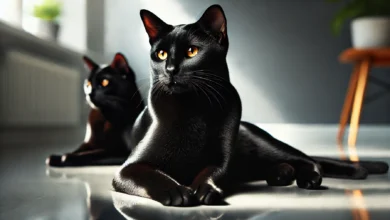The Siamese Breed: Personality and Traits of These Elegant Cats

The Siamese breed is one of the most recognizable and adored cat breeds in the world.
With their striking blue eyes, sleek bodies, and talkative nature, these elegant felines have captured the hearts of cat lovers for generations.
But there’s more to the Siamese breed than just their beauty.
Known for their intelligence, playful demeanor, and unique personalities, Siamese cats are a delight to have as pets.
In this article, we will delve deep into the personality and traits that make the Siamese breed so special, exploring their origins, characteristics, and how they might fit into your life as a companion.
Whether you’re a long-time cat enthusiast or just curious about this beloved breed, you’re sure to find something fascinating about the Siamese cat.
Table of Contents
History and Origins of the Siamese Breed
The Siamese breed has a rich and storied history that traces back centuries.
Originating in what is now modern-day Thailand, the Siamese breed was once considered royal, with many Siamese cats being kept by Thai royalty.
They were treasured for their beauty, grace, and the belief that they brought good fortune.
In fact, these cats were so revered that they were often guarded by temple monks.
It wasn’t until the late 19th century that the Siamese breed made its way to the Western world.
In 1871, the breed was showcased at the first organized cat show in London, where they immediately drew attention for their exotic appearance.
Over time, the Siamese breed gained popularity in Europe and the United States, eventually becoming one of the most sought-after cat breeds globally.

Where Did the Siamese Breed Originate?
The Siamese breed originated in the ancient kingdom of Siam, which is modern-day Thailand.
These cats were considered sacred and were often given as gifts to royalty and dignitaries.
Their status as temple cats and companions to nobility elevated their standing in society.

Historical Significance of the Siamese Cat
The Siamese cat’s historical significance goes beyond their role in royalty.
Legends tell of Siamese cats guarding temples and being companions to monks, believed to have spiritual importance.
Their striking appearance, combined with their sacred role, made them highly valued in Siamese culture.

How Siamese Cats Became Popular in the Western World
When the Siamese breed was first introduced to the West, they became an instant fascination.
They were first brought to England in the 1800s, where they were showcased at cat exhibitions.
Over time, Siamese cats were imported to the United States, where they quickly gained fame for their beauty and unique personalities.
Today, the Siamese breed remains one of the most popular and well-known breeds worldwide.
The Siamese breed has a rich history, originally from Thailand, where they were considered sacred and royal companions.
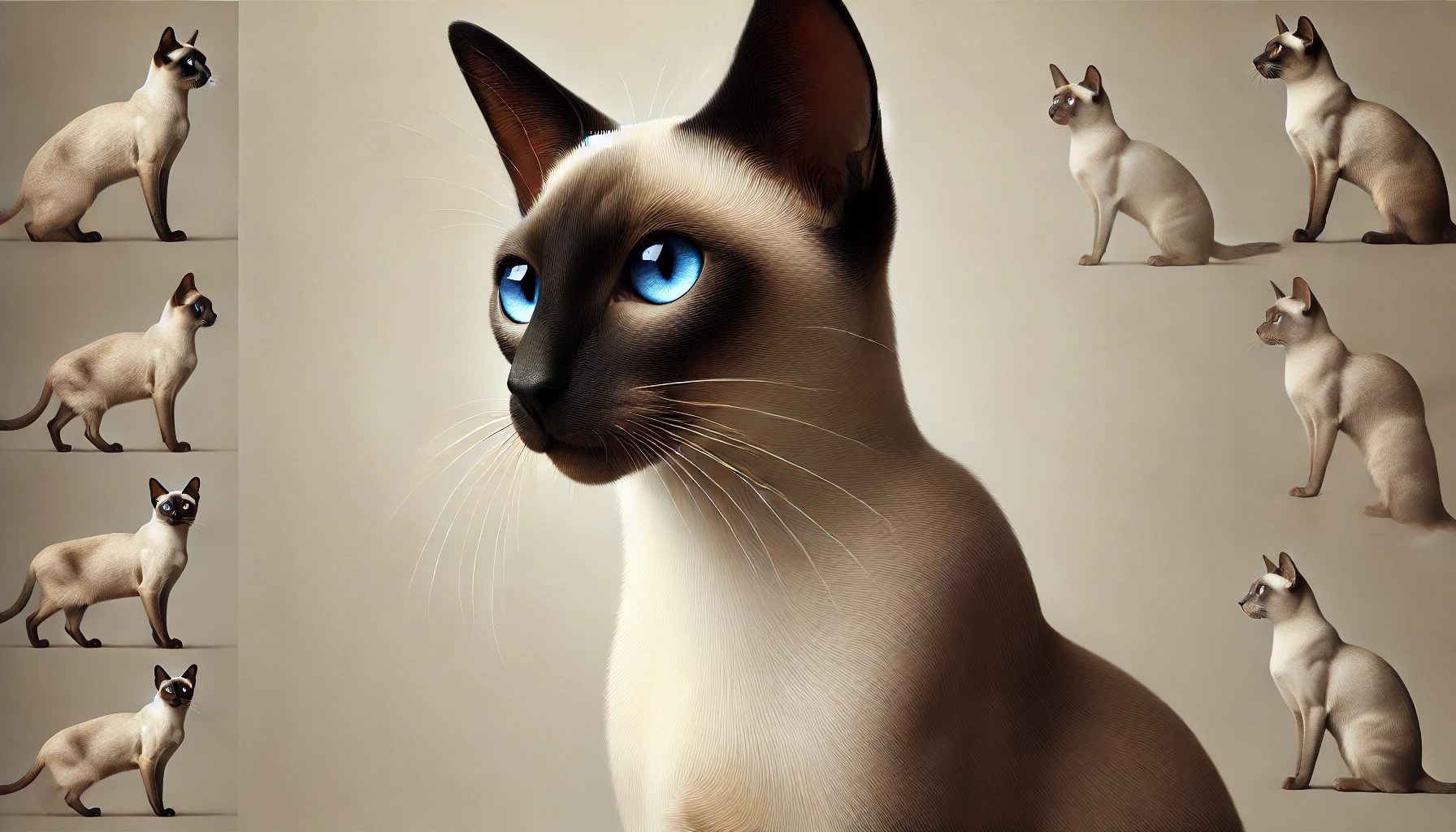
Physical Characteristics of Siamese Cats
The Siamese breed is renowned for its sleek, graceful body and striking appearance.
One of the most iconic features of Siamese cats is their almond-shaped, vivid blue eyes, which are often described as deep and expressive.
In addition to their eyes, their short coat and color points make them instantly recognizable.
The color varieties for the Siamese breed are numerous, and each has its specific genetic association.
Now, let’s explore some interesting physical attributes of the Siamese breed.
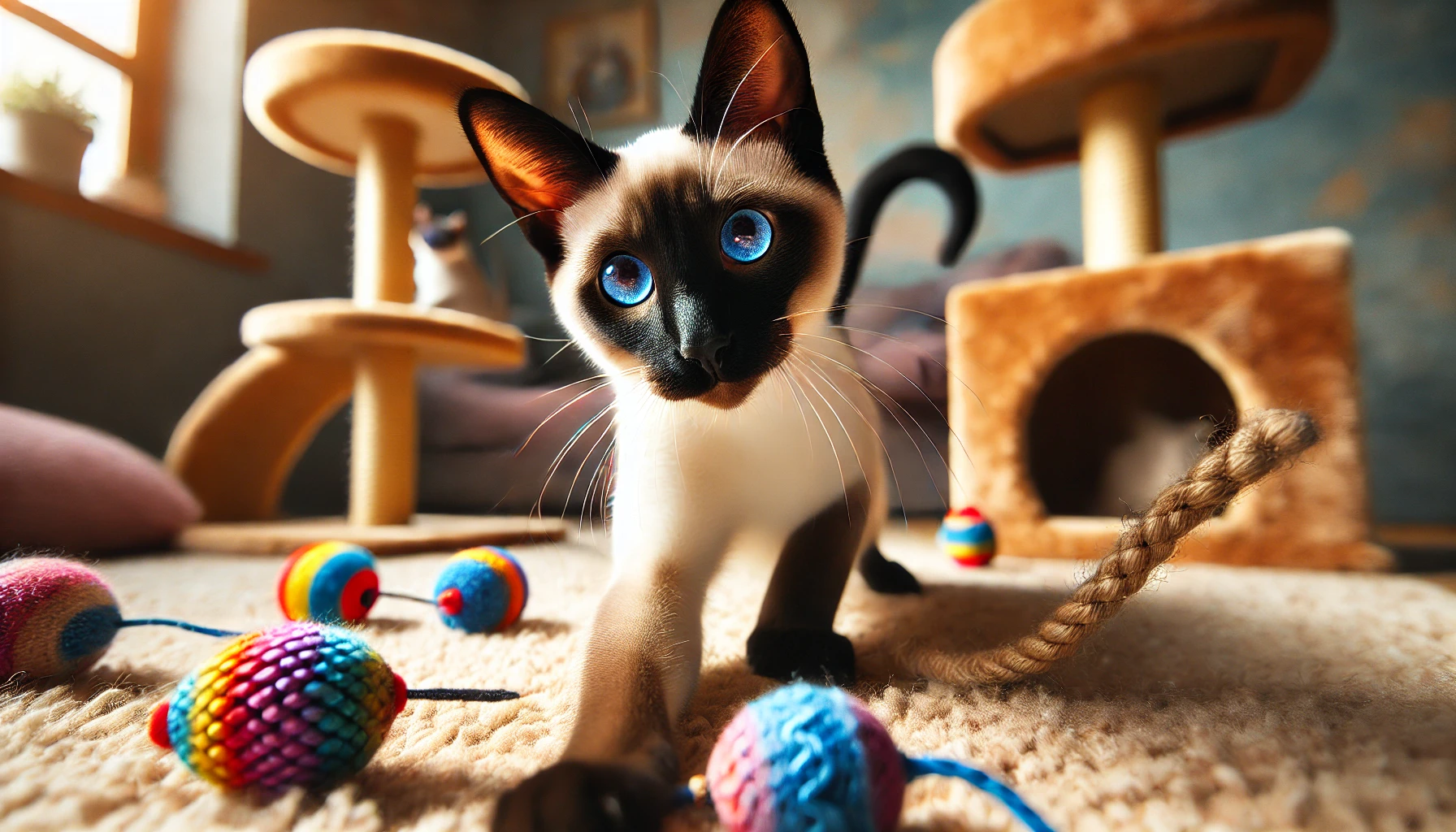
Unique Characteristics of Siamese Cats
Siamese cats are characterized by a long, slender body shape and a triangular head with notably large ears.
Their body is muscular but lean, and their coat is short, fine, and lies close to the skin, adding to their sleek look.
The most recognizable feature of the Siamese breed is their ‘points’—darker hues over the ears, face, paws, and tail.
The contrast between these darker hues and the lighter-colored body makes this breed truly stunning.
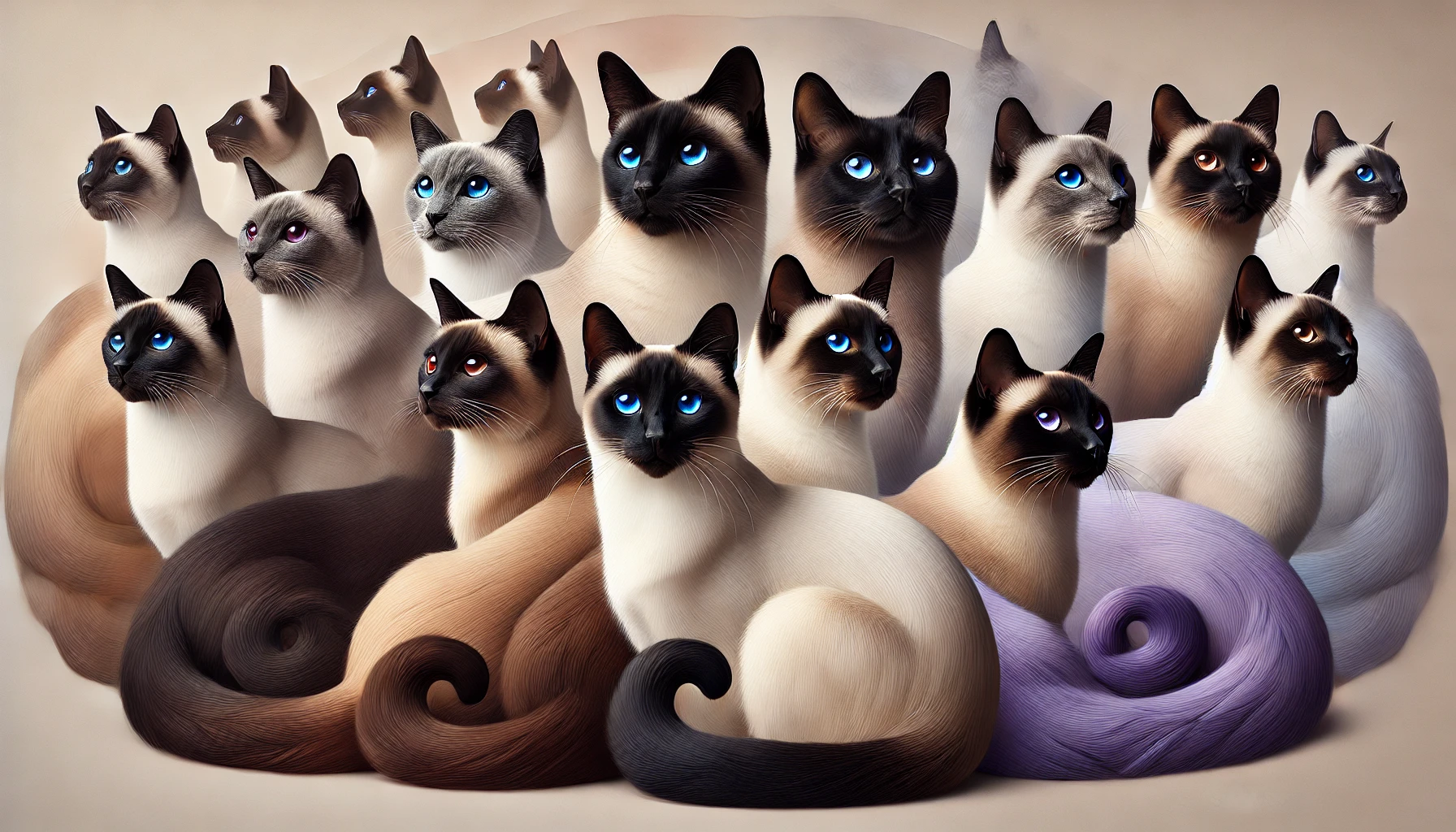
Coat Patterns in the Siamese Breed
Siamese cats come in a variety of colors, known as ‘point colors.’ These include:
- Seal Point: The most common, dark brown points with a cream-colored body.
- Chocolate Point: Lighter brown on the points with an ivory body.
- Blue Point: Grey-blue points with a bluish-white body.
- Lilac Point: Pale grey points with a light cream-colored body.
These color variations develop as the Siamese cat ages, due to a temperature-sensitive enzyme that causes the cooler parts of their body—the extremities—to darken over time.
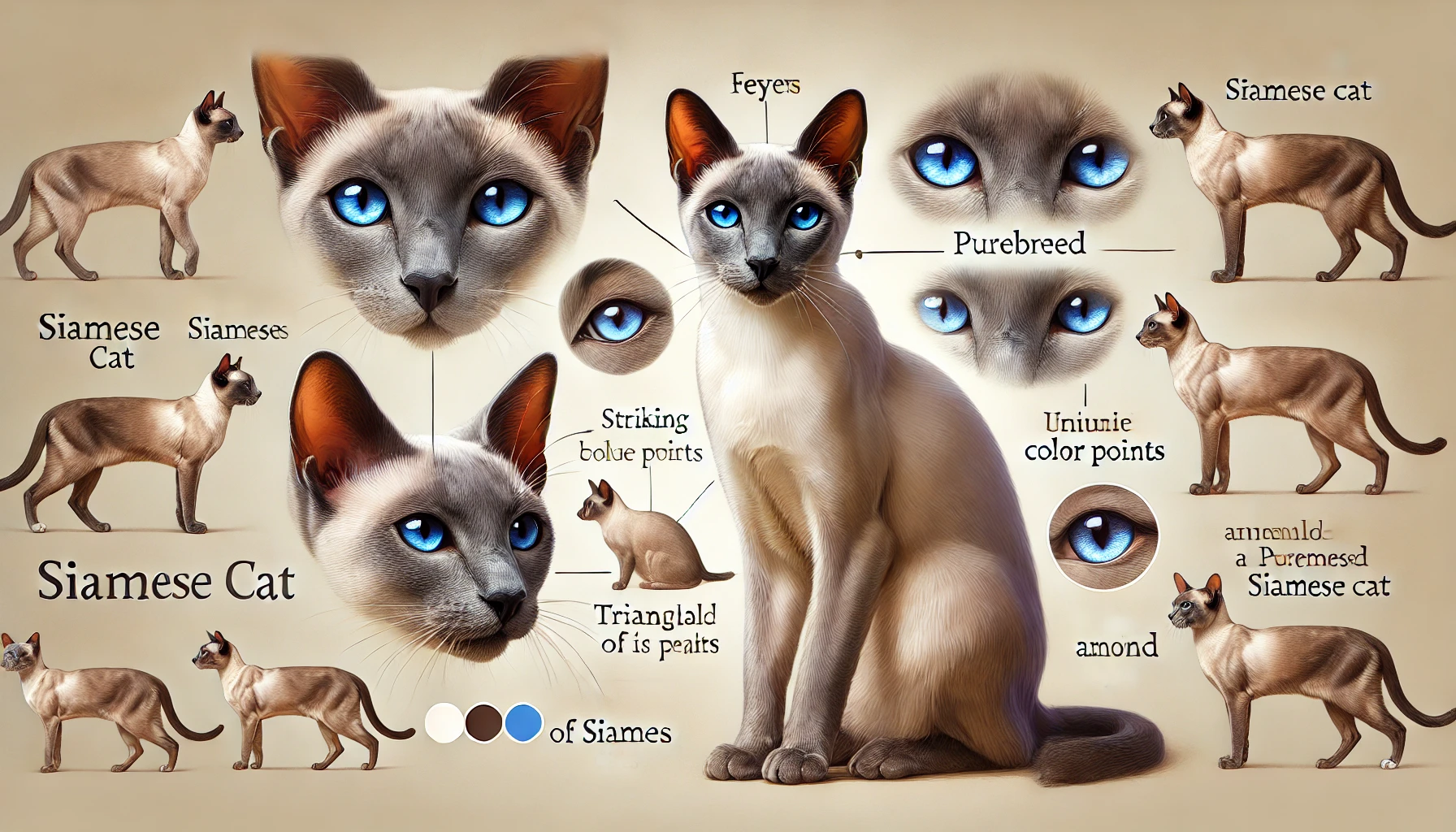
How to Identify a Purebred Siamese Cat
Purebred Siamese cats have several observable traits that differentiate them from other breeds.
These include point coloration, deep blue eyes, and a sleek, elongated body.
Siamese cats are also known for being more vocal than other breeds.
If you’re unsure whether your cat is a purebred Siamese, it’s best to consult a breeder or verify registration with a recognized cat association.
Siamese cats are known for their sleek bodies and striking blue eyes, along with their unique color points that develop over time.
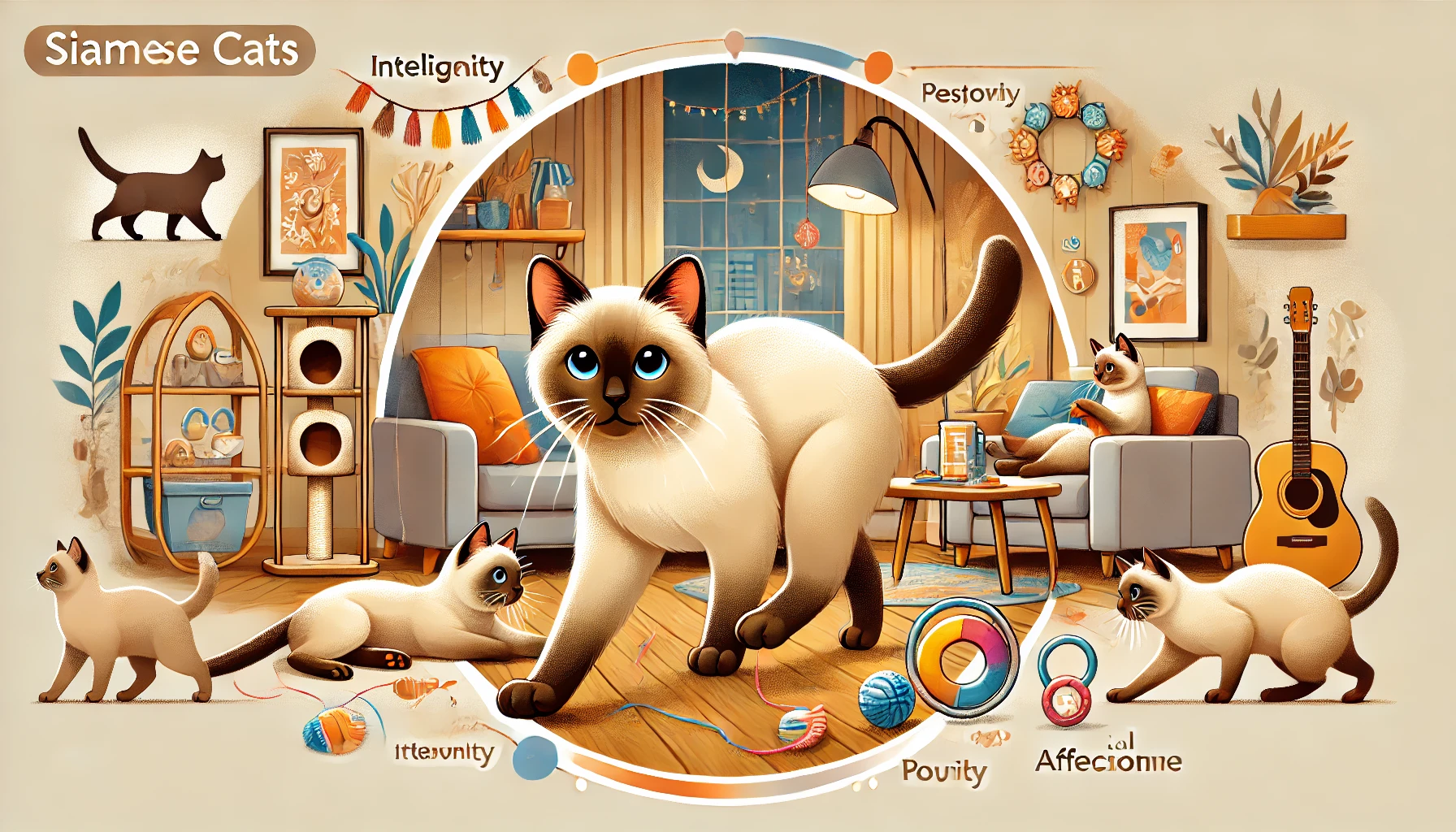
Personality Traits of Siamese Cats
The Siamese breed is renowned not only for its stunning looks but also for its unique personality traits.
Siamese cats are characterized by their outgoing, social nature and crave human interaction.
Often referred to as ‘dog-like’ due to their loyalty and attachment, Siamese cats will frequently bond closely with their owners and be quite demanding in terms of attention.
These cats love to be in the company of people and enjoy being part of their daily activities.
Let’s explore some of the personality traits that make the Siamese breed so unique.

The Social Behavior of Siamese Cats
Siamese cats are very social and love following their owners around the house, seeking attention and contact.
They are not the type of cat that enjoys being separated from their owner for long periods.
If left alone too long, they may become vocal or even show signs of separation anxiety.
If you’re looking for a constant companion, the Siamese breed is an excellent choice.
They thrive on being the center of attention and generally get along well with families and other pets.
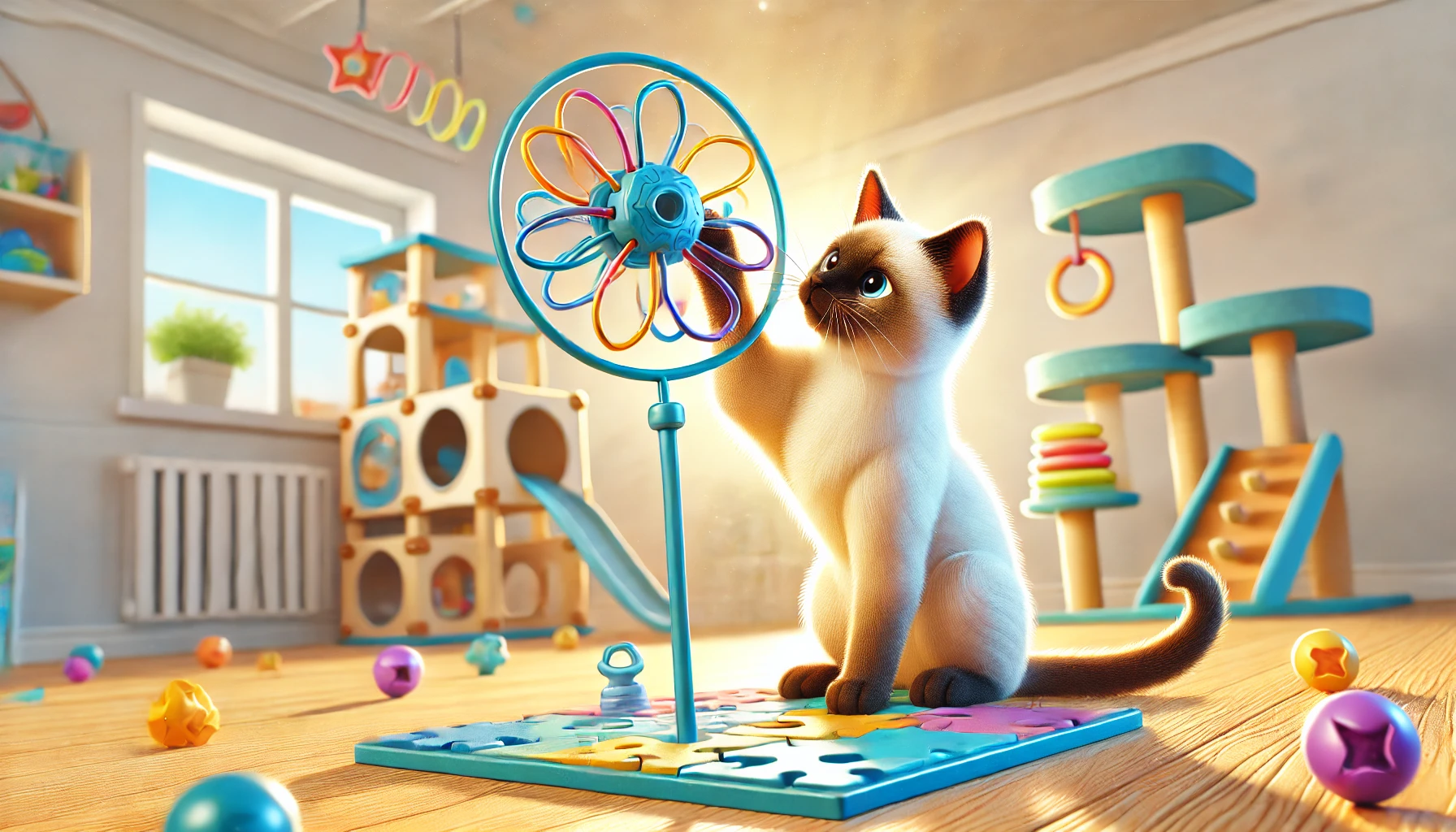
Intelligence and Playfulness in Siamese Cats
Siamese cats are highly intelligent and curious by nature.
This breed requires mental stimulation to avoid boredom, so they enjoy interactive toys, puzzle feeders, and games that challenge their minds.
Siamese cats can even learn tricks like fetching or coming when called, similar to dogs.
Playful and active, they often entertain themselves by chasing toys or engaging in energetic play with their owners.
Be prepared to dedicate quality playtime to these lively felines.

Vocal Tendencies: Why Siamese Cats Are Talkative
One of the most famous traits of the Siamese breed is their vocal nature.
Siamese cats are very talkative and will ‘talk’ to their owners through various meows and other vocalizations.
They tend to be open about their needs and emotions, which is why they are often described as one of the most vocal domesticated cat breeds.
If you enjoy a cat that expresses itself vocally, the Siamese won’t disappoint.

Are Siamese Cats Good with Families and Other Pets?
Siamese cats generally do well in family settings and can get along with children and other pets.
Their social and outgoing nature allows them to fit into various types of households.
However, because they are so interactive and people-oriented, they may become jealous or unhappy if they feel they are not getting enough attention.
If you have a busy household, it’s essential to carve out time for your Siamese cat to keep them happy and content.
The Siamese breed is highly social, intelligent, and known for their playful and vocal nature, often forming strong bonds with their owners.
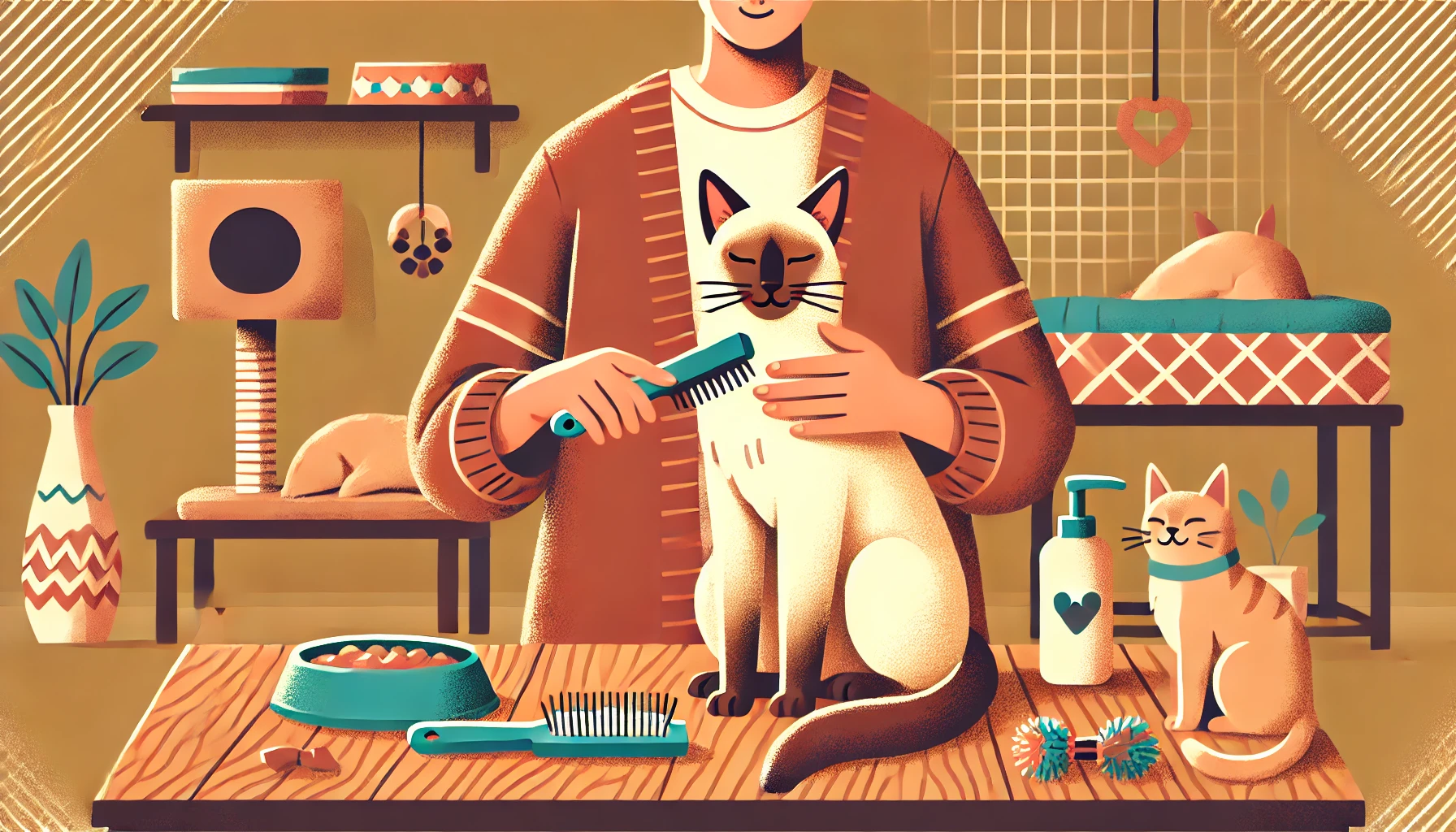
Caring for a Siamese Cat
Owning a Siamese cat comes with the responsibility of understanding their specific care needs.
Siamese cats, while relatively easy to care for, do require attention in terms of diet, exercise, grooming, and overall health.
This breed thrives on human interaction and is generally active, meaning they need both physical and mental stimulation to stay healthy and happy.
Here’s what you need to know about caring for your Siamese cat to ensure they lead a fulfilling life.

Dietary Needs of the Siamese Breed
Siamese cats have a fast metabolism, and their lean bodies require a balanced diet rich in protein to maintain their muscular physique.
When choosing food for your Siamese cat, ensure it contains high-quality animal protein and is free from excessive fillers like grains.
Wet food is often recommended for Siamese cats as it helps with hydration and supports their overall health.
Be mindful of portion sizes, as Siamese cats can be prone to overeating if not monitored.
To maintain a healthy diet for your Siamese cat:
- Feed a diet rich in high-quality animal protein.
- Avoid foods with excessive fillers such as corn or soy.
- Provide wet food regularly to ensure proper hydration.
- Monitor portion sizes to prevent overeating and obesity.
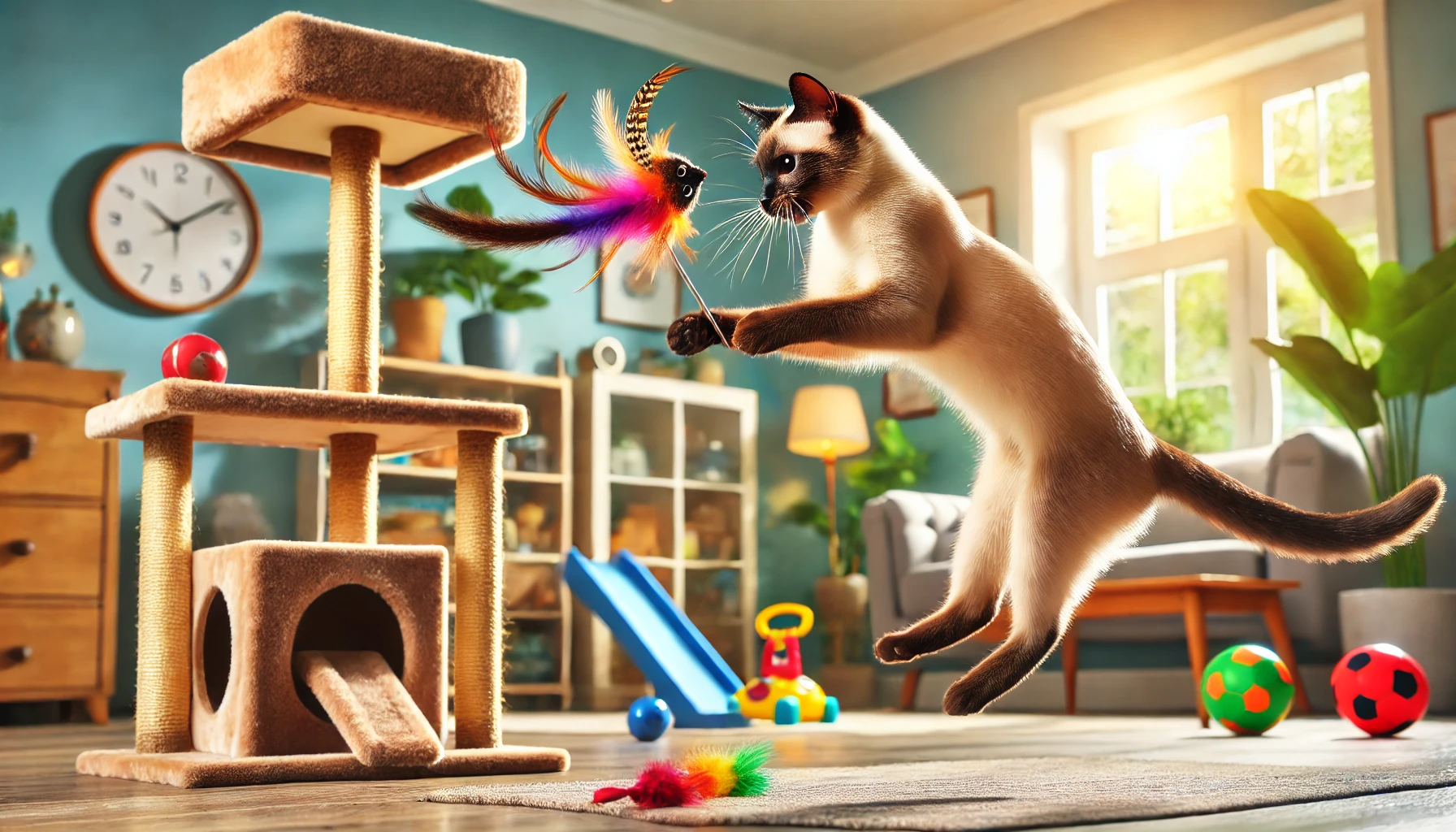
Exercise and Playtime for Siamese Cats
As a highly energetic and playful breed, Siamese cats require daily physical activity to stay fit and happy.
Regular play sessions are essential for this breed, as they can become bored or frustrated without enough stimulation.
Interactive toys, laser pointers, and feather wands are excellent for keeping them entertained.
Additionally, Siamese cats enjoy climbing, so providing a cat tree or climbing shelves is a great way to allow them to explore and burn off energy.
Some ways to keep your Siamese cat active include:
- Engage in daily interactive play sessions.
- Provide toys like feather wands or laser pointers for mental stimulation.
- Offer a cat tree or climbing shelves to encourage climbing and exploration.
- Consider puzzle feeders to challenge their minds and keep them entertained.

Grooming Tips for Siamese Cats
Grooming a Siamese cat is relatively easy due to their short, fine coat.
These cats do not require frequent baths, but they benefit from regular brushing to remove loose hair and prevent shedding.
A soft-bristle brush or grooming glove can help keep their coat smooth and shiny.
Additionally, it’s important to clean their ears and trim their nails regularly to maintain their hygiene.
Grooming tips for Siamese cats include:
- Brush their coat once or twice a week to reduce shedding.
- Clean their ears regularly to prevent wax build-up.
- Trim their nails every few weeks to keep them from getting too long.
- Check their eyes for any signs of irritation or discharge.

Health Issues Common in Siamese Cats
While Siamese cats are generally healthy, they are prone to certain genetic health issues that owners should be aware of.
Some of the most common health concerns for this breed include dental problems, respiratory issues, and progressive retinal atrophy (PRA), which can lead to vision loss.
Regular veterinary check-ups are essential for early detection and treatment of any health issues.
Common health issues in Siamese cats include:
- Dental problems such as gingivitis and tooth decay.
- Respiratory issues, especially in younger cats.
- Progressive retinal atrophy (PRA) leading to vision loss.
- Obesity, which can be managed with a proper diet and exercise.
By being aware of these potential health concerns and providing proper care, you can help ensure your Siamese cat lives a long and healthy life.
Siamese cats require attention to diet, regular exercise, and consistent grooming to ensure their well-being and happiness.

Choosing a Siamese Cat: Is It the Right Breed for You?
Adding a Siamese cat into your life is quite a significant decision, as this breed requires much attention and interaction.
The Siamese breed is known for being intelligent, affectionate, and playful.
However, due to its high energy levels and vocal tendencies, this breed may not be ideal for everyone.
It is important to understand whether the Siamese breed fits into your lifestyle before making an informed decision.
Below are key factors to consider when selecting a Siamese cat as your pet.

Does the Siamese Breed Fit Your Lifestyle?
Siamese cats thrive in environments where they receive plenty of interaction and mental stimulation.
If you’re someone who works long hours or travels frequently, this breed may not be the best fit, as they can become lonely or develop behavioral issues when left alone for extended periods.
Siamese cats do best in households where they have company—whether from humans or other pets.
Ask yourself the following questions:
- Do you have enough time to engage and play with your Siamese cat daily?
- Are you prepared for a vocal and attention-seeking pet?
- Can you provide a stimulating environment with toys and activities?
- Do you have other pets or family members to keep the cat company?

What to Expect When Living with a Siamese Cat
Living with a Siamese cat can be a joyful and rewarding experience, but it’s important to be prepared for their distinctive personality traits.
Siamese cats are known for being affectionate and loyal, often following their owners around the house.
However, they can also be demanding and may show frustration if their needs are not met.
It’s essential to provide them with plenty of attention, toys, and mental stimulation to keep them happy and healthy.
Things to expect when living with a Siamese cat:
- A strong bond with their owner—Siamese cats often become very attached to their humans.
- A highly vocal pet—be prepared for constant ‘conversations’ with your cat.
- A playful and energetic companion who enjoys interactive games.
- A curious and intelligent cat that requires mental stimulation and toys.

How to Find a Reputable Siamese Cat Breeder
When deciding to bring a Siamese cat into your life, it’s important to find a reputable breeder who prioritizes the health and well-being of their cats.
A good breeder will be knowledgeable about the breed, provide a clean and healthy environment for their cats, and ensure that the kittens are well-socialized from an early age.
They should also be able to provide you with information on the cat’s health history and any potential genetic issues.
Tips for finding a reputable breeder:
- Look for breeders who are registered with recognized cat associations, such as The International Cat Association (TICA) or the Cat Fanciers’ Association (CFA).
- Visit the breeder’s facility to ensure it is clean, and the cats are well cared for.
- Ask the breeder about the health history of the parents and whether they perform genetic testing for common Siamese health issues.
- Avoid breeders who seem focused solely on profit or do not provide sufficient information about the cats’ health and care.

Adoption vs Buying: Where to Get a Siamese Cat
While buying from a reputable breeder is one option, adoption is another way to bring a Siamese cat into your home.
Many Siamese cats are available for adoption through shelters or breed-specific rescue groups.
Adoption can be a rewarding experience, as you provide a loving home to a cat in need.
Whether you choose to adopt or buy, make sure you research thoroughly and make an informed decision that suits your household and lifestyle.
Places to find Siamese cats for adoption:
- Local animal shelters or humane societies.
- Siamese-specific rescue groups or organizations.
- Online adoption platforms such as Petfinder or Adopt-a-Pet.
Both options—adopting or buying—come with responsibilities, but either way, you’ll gain a loving and loyal companion in a Siamese cat.
Siamese cats thrive on interaction and are best suited for households where they receive regular attention and mental stimulation.

Why the Siamese Breed Could Be the Perfect Companion
The Siamese breed is one of the most unique and beloved cat breeds in the world.
From their striking appearance to their engaging and affectionate personalities, these cats are perfect for anyone who values a loyal, interactive, and intelligent companion.
However, they are not suited to every lifestyle.
It’s essential to understand their specific needs before welcoming a Siamese cat into your home.

Summary of Siamese Breed Traits
Siamese cats are famous for their sleek bodies, vivid blue eyes, and distinctive color points.
Their playful and curious nature makes them highly interactive pets, but they also require significant attention and mental stimulation.
Their vocal tendencies and desire for constant companionship make them a great choice for families or individuals who can dedicate time to meet their needs.
Here are some key highlights of what makes Siamese cats unique:
- Physical Characteristics: Striking blue eyes, triangular head, and color-pointed fur.
- Personality: Affectionate, intelligent, and highly vocal.
- Care: Requires a diet rich in protein, regular playtime, and consistent grooming.
- Social Needs: Thrives in environments with plenty of interaction and company.

Is the Siamese Breed Right for You?
Choosing a Siamese cat is a decision that should be carefully considered.
Their high energy and social needs mean they are best suited to households where someone is around most of the time.
If you enjoy spending time with your pets and are ready for the commitment of a highly engaging companion, the Siamese breed could be a perfect fit.
However, if you are often away or unable to dedicate enough attention, another breed might be more suitable.
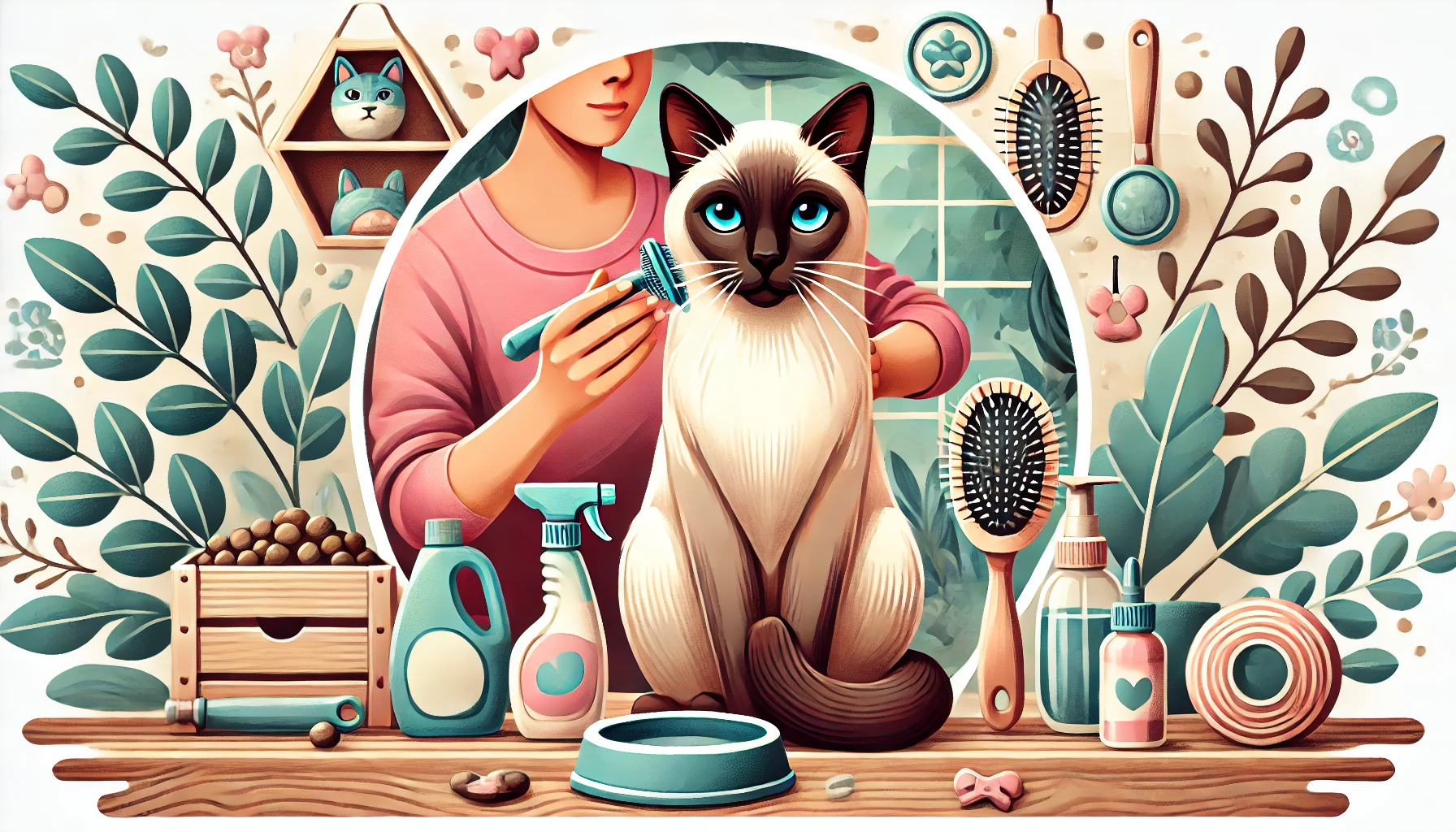
Caring for a Siamese Cat
Once you have decided that the Siamese breed is right for you, understanding their care needs is vital.
Their fast metabolism requires a high-protein diet, and their playful nature means they need daily exercise and mental challenges.
Regular grooming, such as brushing and nail trimming, will help keep them looking their best.
Staying on top of regular veterinary check-ups is also crucial to monitor for common health issues like dental problems or progressive retinal atrophy.

The Loyal and Affectionate Nature of the Siamese Breed
For those who are prepared to meet their needs, Siamese cats offer a deeply rewarding relationship.
Their strong bond with their owners, combined with their engaging and vocal personalities, creates a pet that feels more like a true companion.
Whether you’re playing with them, engaging in ‘conversations,’ or simply sitting together, the Siamese breed brings joy and companionship into any home.
Ultimately, the Siamese breed’s combination of beauty, intelligence, and affection makes them an excellent choice for anyone looking for a loyal and loving pet.
If you’re ready to meet their needs, you’ll find that a Siamese cat is not just a pet, but a true member of the family.
For those prepared to meet their needs, Siamese cats offer a deeply rewarding companionship, with their loyalty, beauty, and intelligence.
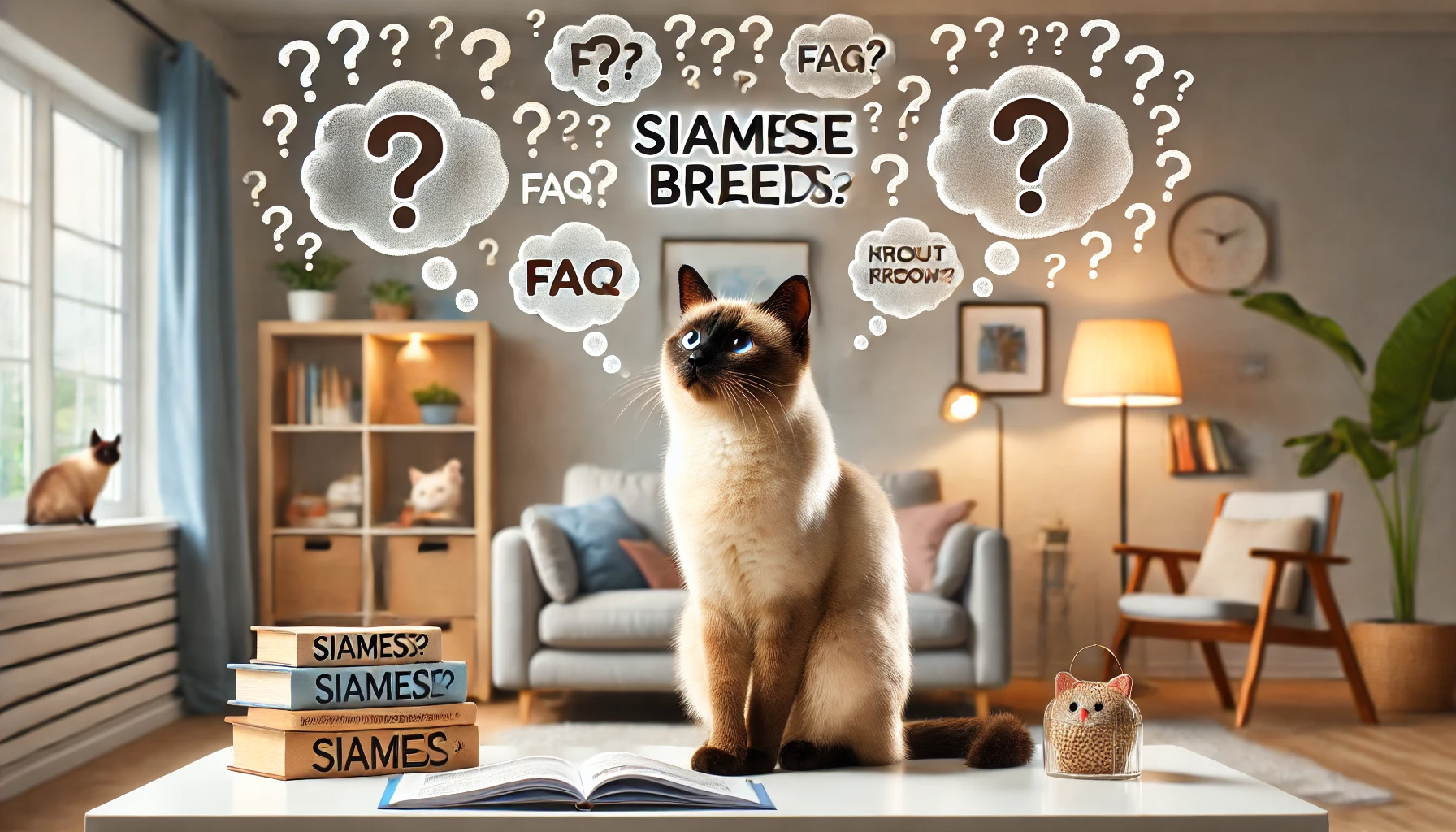
Siamese Breed FAQs
Following are some of the most common questions people ask about the Siamese breed, providing insight into their characteristics, care needs, and suitability for your home.
Are Siamese cats good with children?
Yes, Siamese cats are generally good with children.
They are playful and affectionate, making them great companions for families.
However, supervision is recommended to ensure proper interaction between the cat and young children.
Do Siamese cats require a lot of attention?
Yes, Siamese cats love attention and companionship.
They are highly social and need regular interaction with their owners.
If left alone for long periods, they may become depressed or develop behavioral issues.
How vocal are Siamese cats compared to other breeds?
Siamese cats are very vocal compared to other breeds.
They often make various meows and sounds to communicate with their owners, engaging in frequent ‘conversations’ to express their needs and emotions.
How much grooming do Siamese cats require?
The Siamese breed has a short, fine coat that does not require much grooming.
Weekly brushing is sufficient to remove loose hair and keep them sleek.
Regular ear cleaning and nail trimming are also important for overall hygiene.
Are Siamese cats prone to health problems?
Siamese cats are prone to genetic health issues, including dental problems and progressive retinal atrophy.
Regular veterinary check-ups are essential for early detection and maintenance of any health concerns.


